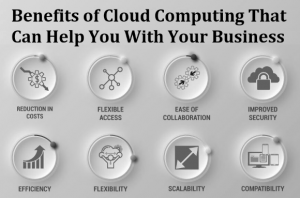This is a challenging time for each one of us—whether as an individual or as a business.
In these difficult times, it is more important than ever to keep a human-first approach in mind for all of our decision-making. Especially in the way we build our products as we touch many human lives with them.
Aligning on What Matters
As a Product person, you’re not just responsible for making your boss or board happy, you’re responsible for the success of your users and the wellbeing of your teammates. If you want to balance it all, you need to lead with empathy.
There are three dimensions to be considered in human-first product management:
- First and foremost are our customers who spend their time on our products.
- Next are our engineering/product teams who toil long hours to execute on the vision of our companies and bring great ideas to life.
- Last but not the least, our investors who provide the necessary resources to drive the company’s mission forward.

Take a moment to visualize what these three dimensions mean to you. How do they factor into your daily decisions? How does your company view these three dimensions? While it can be difficult to satisfy all three dimensions in a regular working environment, let alone our current situation, keeping them top-of-mind will make for a more human-first thought process.
Five Human-First Considerations
Every Product team needs to discuss how they will handle the five following topics (if you haven’t already). Taking customers, teammates, and investors into consideration will be the best strategy for long-term success.
1. Sustainability
In order to deliver a sustainable product, you must have the appropriate product architecture, processes, and teams in place to manage the increased demand.
More than ever before, people are relying on our products to help them get their jobs done efficiently. Have you noticed an upswing in the number of users in your product? 50% of Gainsight PX customers are experiencing an increase in Daily Active Users (DAU) since the shift to work-from-home. Some of our customers are experiencing 2-5 times their average amount of DAUs!
It’s imperative that you sustain a high-quality product experience at scale. If you don’t have the infrastructure in place to scale and sustain your increased user base, then you may have to make some sacrifices. It may not be a good idea to launch new things or reconsider your freemium offerings. Microsoft Teams announced recently that they may consider cutting back their free services if it ran into a shortage of capacity.
It’s also important to determine and communicate your business continuity plans. This will ensure operational coverage in case of localized outages or the unavailability of key personnel. Putting a strategy in place will not only promote long-term sustainability but also ensure that no one team is overloaded and overworked.
2. Data Validity
Data is a key driver in many product-related decisions. We rely heavily on product usage data and run user experiments before launching products and features. However, the rules have changed temporarily as users are not behaving as they would have behaved a month ago when it was business as usual. Assumptions based on dated market research, user expectations, and A/B tests might not be true to accurately support today’s decision.
This is a period of rapid change and every business is making crucial decisions under tremendous time pressure. In some cases the quality of these decisions will determine whether customers stay or leave—ultimately determining the future for our business.
As the product owner you need to provide the business with accurate and timely data about customers activity. Are they still using your product? Are they increasing use of certain areas but reducing use in others? Are new people coming in? How quickly?
You should be checking this data more vigilantly than usual to keep your finger on the pulse of any data trends. This provides visibility to investors and teammates and allows you to provide the most optimal experience for your customers.
3. User Sensitivity
We’re all feeling more stressed than usual. Therefore, it is extremely critical to take customer sentiment into consideration while communicating and making product-release decisions. Provide ample opportunities for your users to take NPS surveys and provide feedback. You can also use this customer sentiment in the decision-making process to help you prioritize what your team needs to focus on.
Assessing your customer’s needs and prioritizing features to best serve their business needs in a crisis goes a long way. Zoom has experienced an incredible influx of users as more schools and business switch to a remote workstyle. By integrating with Clever, Zoom expanded their services across 8,000 K-12 districts to enable quick online learning.
Using your application to deliver useful information, tooling, and support to your customers is a good way to increase loyalty through these difficult times and, frankly, it’s the right thing to do.
4. Post-Release Team Capacity
Many of our teammates may be experiencing limited productivity during this time. They’re required to effectively juggle work and home life like never before.
New product releases put a lot on the shoulders of Engineering/QA, Support, and Documentation teams even in the best of times. Keep this in mind when rolling out new features and enhancements in your product. Even companies like Google, have paused their product releases, such as Chrome OS, due to the adjusted work schedules of their employees.
5. Striking the Right Balance
It can be hard to make customers, teammates, and investors happy all the time. It’s particularly tricky to balance investor expectations (i.e. maximizing profitability) with customer needs (delaying certain things to provide enhanced support).
Our decisions in the current scenario will be an indicator of whether we can drive higher revenue from the higher usage. Many companies, including Zoom and Slack, reported that while the work-from-home trend has increased their usage, some of those extra users weren’t paying.
In order to service their increasing number of users, Netflix and Disney+ reduced video quality for its European subscribers, reducing strain on internet networks. This is no right answer or one-size-fits-all solution in this situation, so we need to be prudent while maintaining moderate balance between different competing forces.
When in Doubt, Lead with Compassion
Your customers, teammates, and investors are all the same in the end—they’re all humans. We’re all sharing this earth and right now, there are some uncertainties that we’ve never faced before that are affecting us all.
The path forward for every business will be different, as each of us are faced with unique situations, but considering these human-first principles while building products will lead to decisions that will ultimately benefit everyone involved.
Business & Finance Articles on Business 2 Community
(61)







